-
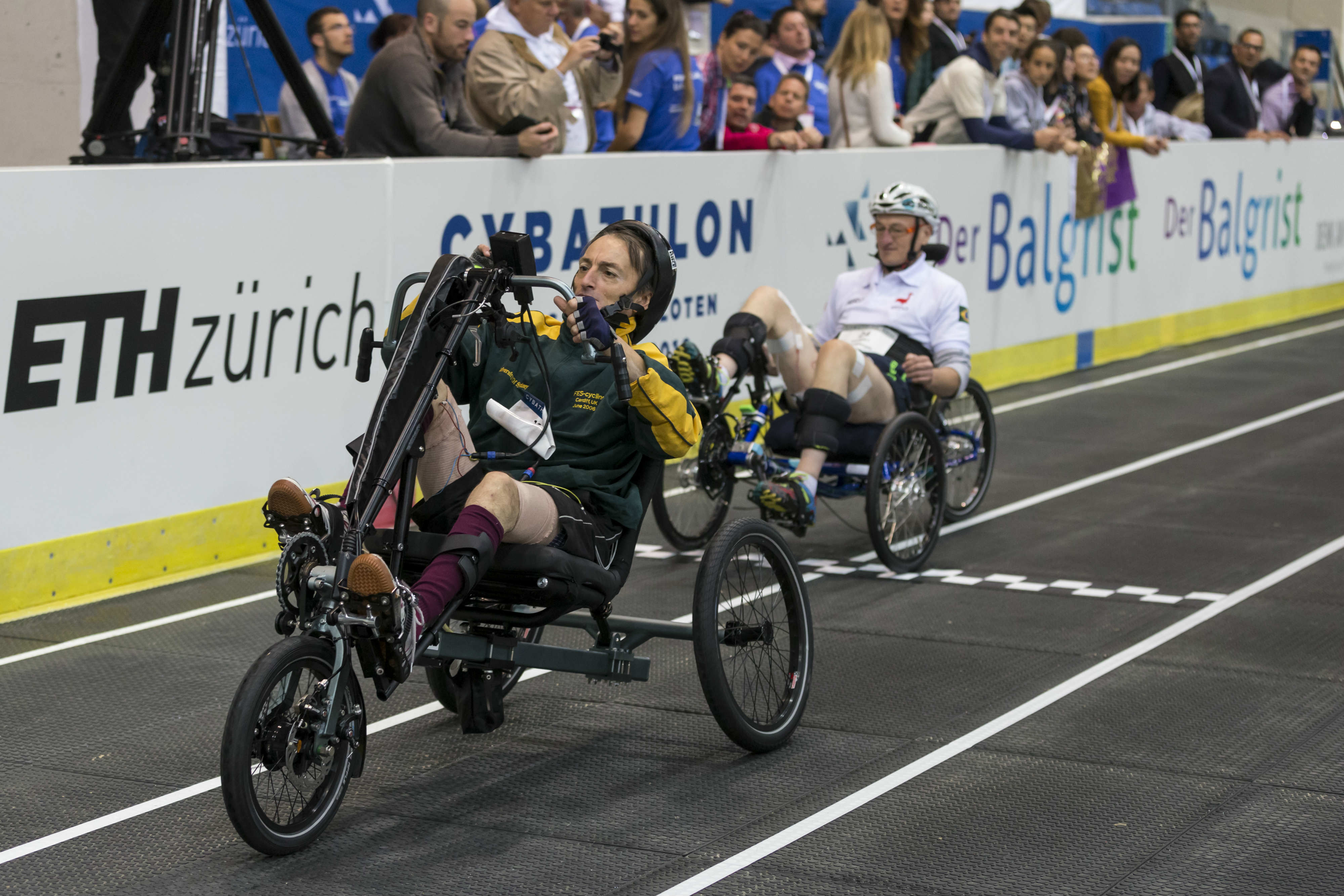
Racers on functional electric stimulation bikes are cheered on. Photo by Alessandro Della Bella.
-
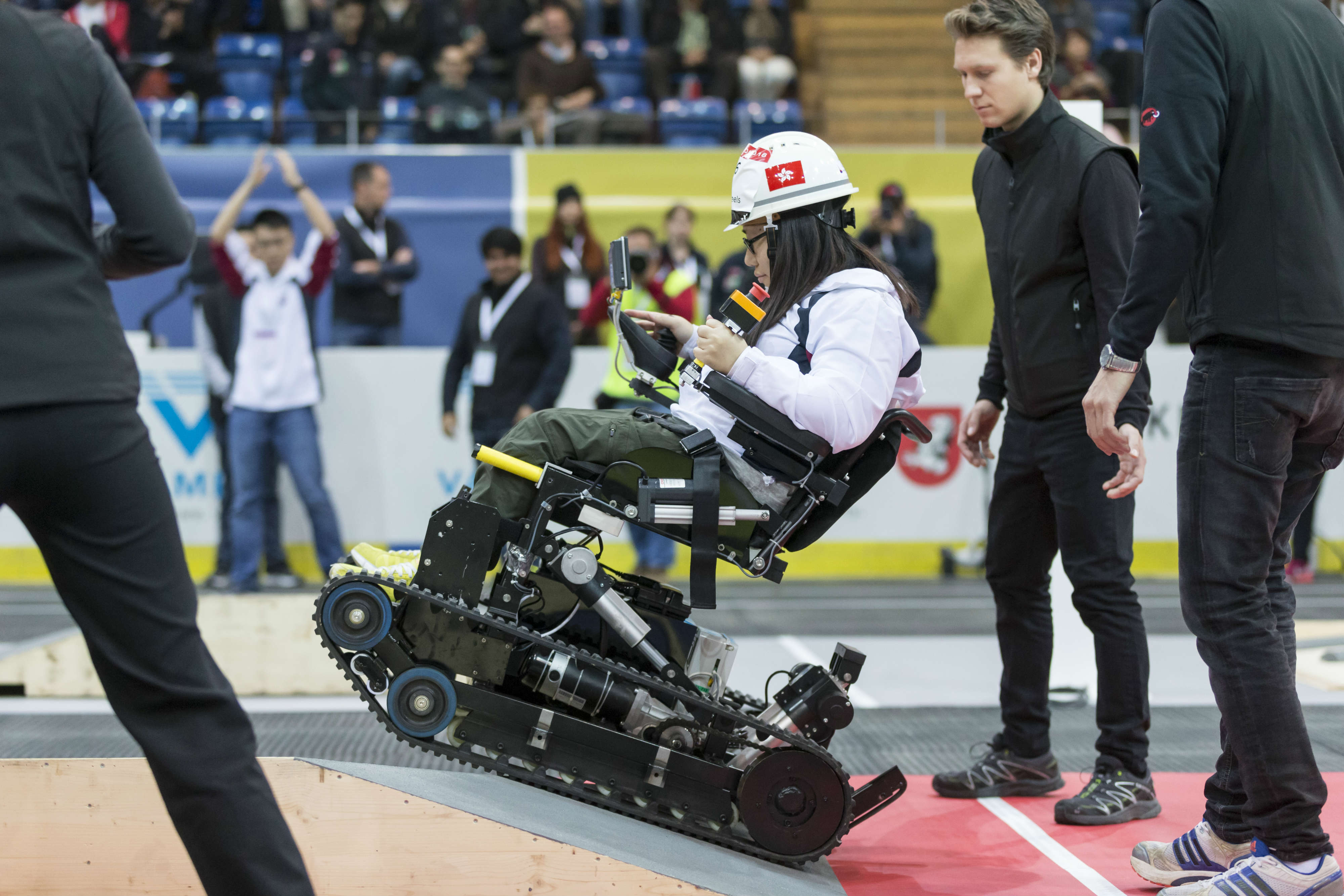
The powered wheelchair race. Photo by Alessandro Della Bella.
-
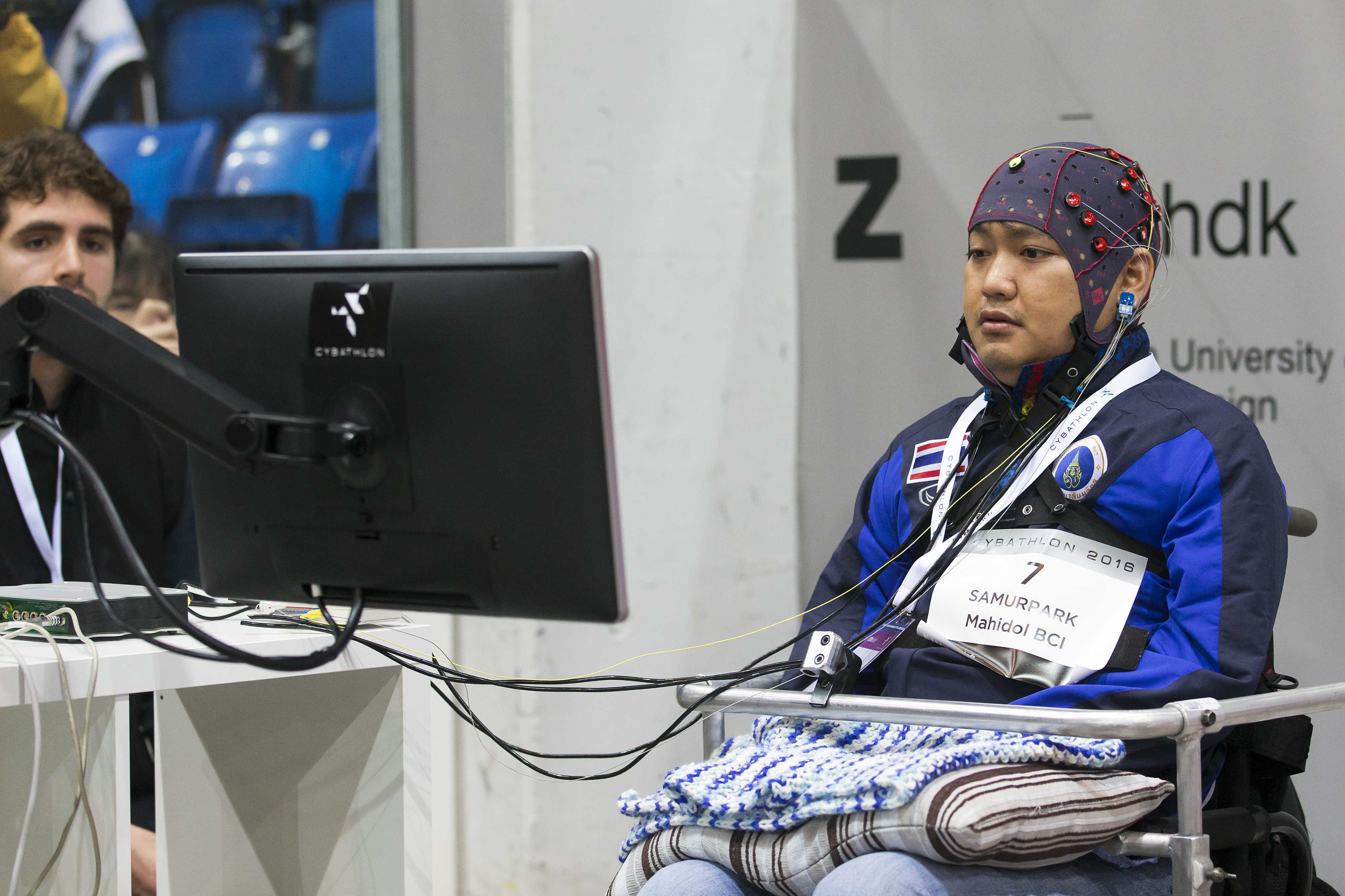
The Brain-Computer Interface race had contestants maneuver digital avatars via a mind-machine interface. Photo by Nicola Pitero.
-
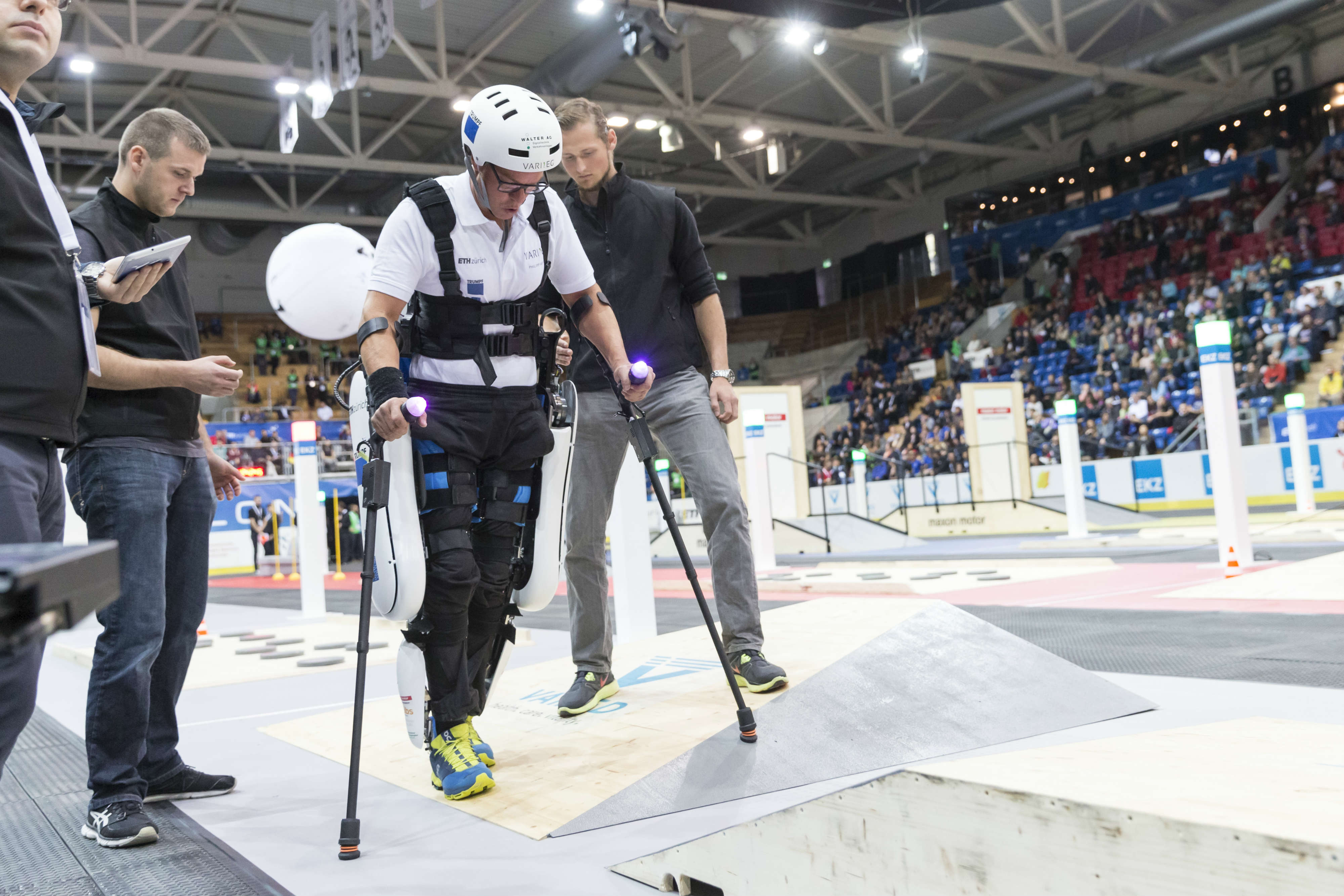
The powered exoskeleton race. Photo by Alessandro Della Bella.
-
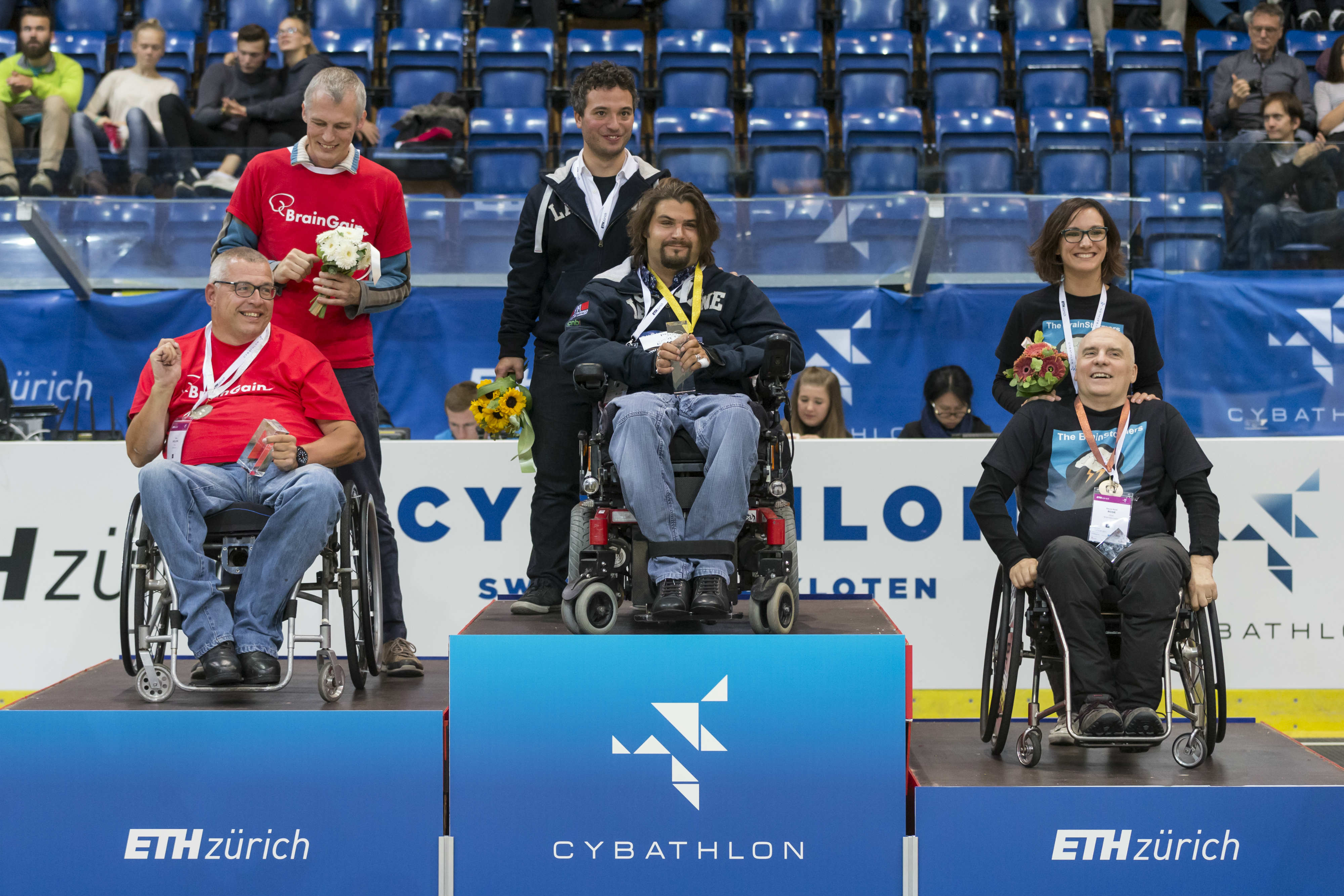
This might well be what mainstream athletic competition looks like in the near future. Photo by Alessandro Della Bella.
The World’s First Cybathlon
Let the games begin.
Estimates suggest that about half the world’s population (3.6 billion of us) spent at least some part of last summer watching athletes in Rio de Janeiro go faster, higher, and stronger. Three weeks after the close of the Paralympic Games, the first-ever Cybathlon took place on October 8.
The Cybathlon is a different sort of competition, in which performance enhancement is not only perfectly acceptable, it’s actively encouraged. Organized by Swiss university ETH Zurich (Albert Einstein’s alma mater), it saw 66 teams and around 400 contestants from various countries participate in a daylong competition. The event was a little different from your typical festival of strength and endurance: it permitted full-powered assistance using bionic and cybernetic enhancements, which distinguishes it from the more stringent rules of the Paralympic Games.
Cybathlon athletes (“pilots” in event parlance) were allowed to use both commercially available technology and prototypes in six disciplines, each chosen to highlight both the pilot’s athletic prowess and the capability of the technology to emulate bodily motion. For instance, in the powered leg prosthesis race, competitors climbed up and down a series of slopes and stepped carefully along a thin wooden board. In the powered arm prosthesis race, pilots performed tasks such as lifting objects, slicing bread, and hanging clothes on a line. The final event—the Brain-Computer Interface race—was almost sci-fi, taking place in a computerized obstacle course in which quadriplegic competitors controlled digital avatars via a mind-machine interface.
Such events can seem like a corporate stunt or hacker’s experiment. And it’s true, the Cybathlon seems intended to attract buzz, earn likes, and generate press for both emerging technologies and the companies that create them. But sometime in the future, not too long from now, this might well be what mainstream athletic competition looks like.
Once we hit the physical limits of human speed, endurance, and fortitude, why not celebrate our ability to push through them? Not in a secret testing lab, take the red pill and slip your sample under the door kind of way—but in a way that applauds what humans and machines can achieve as one. Faster. Higher. Stronger. Maybe it’s time to add one more to the list: smarter.




